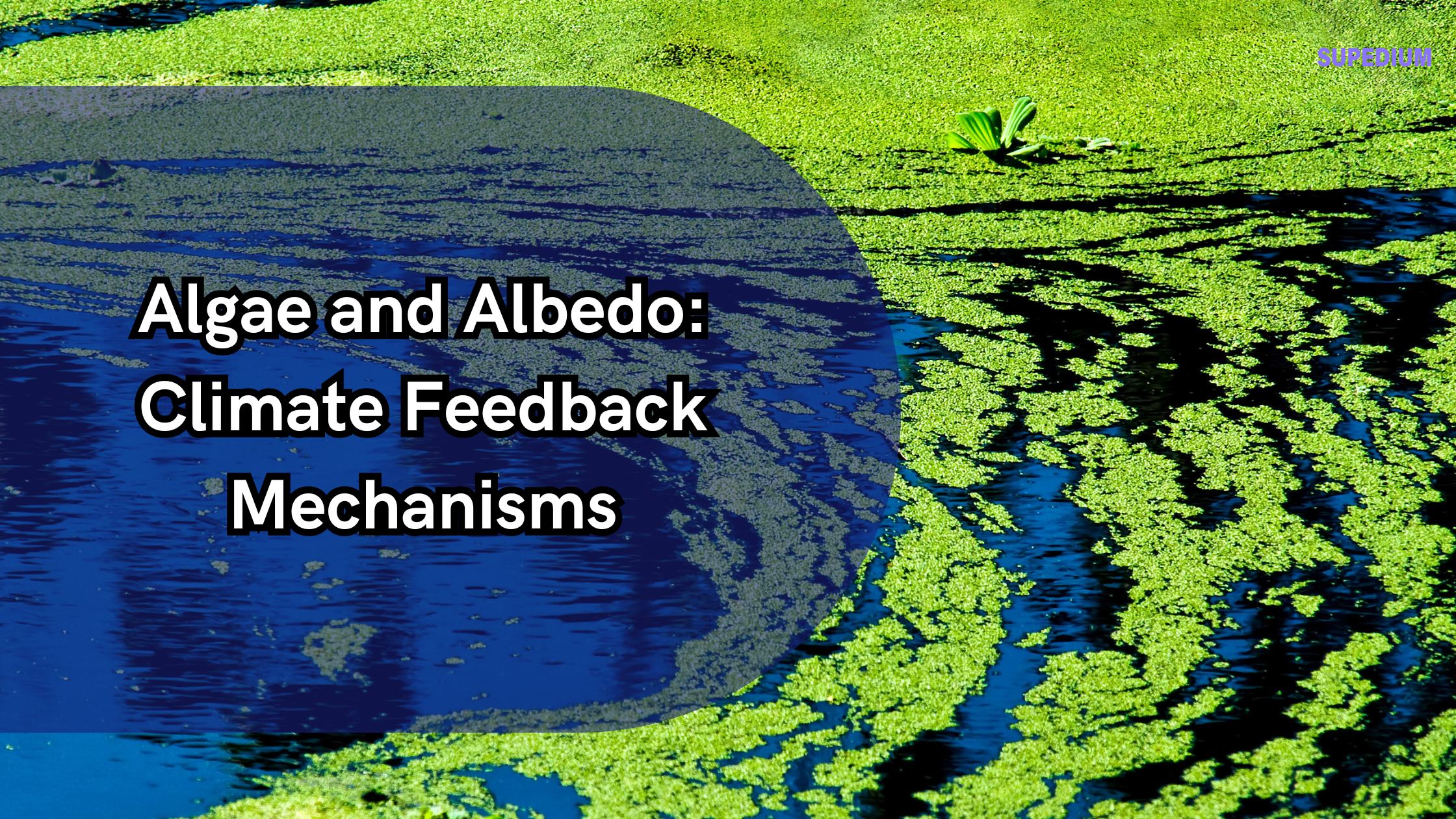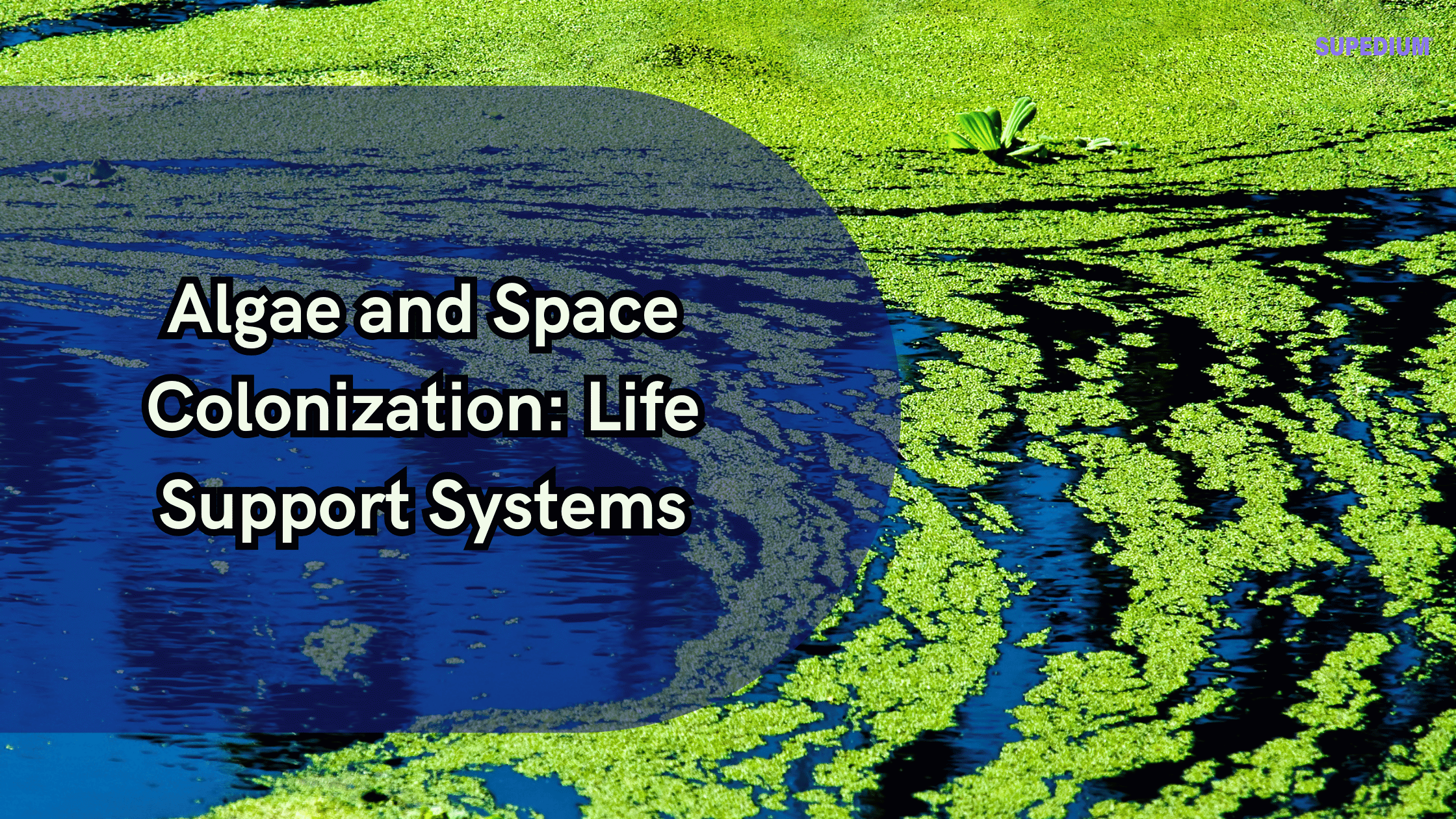Table of Contents
![]()
Introduction
Albedo refers to the reflectivity of a surface, with higher albedo indicating greater reflection of solar radiation. This concept is crucial in climate science as it influences global energy balance and temperature regulation. Albedo plays a significant role in determining how much solar energy is absorbed by Earth’s surface versus how much is reflected back into space.
Algae, diverse in form and function, are integral components of many ecosystems. These organisms, ranging from microscopic phytoplankton to large macroalgae, contribute significantly to carbon cycling and can affect surface albedo in various ways. Understanding how algae influence albedo and, in turn, climate feedback mechanisms is essential for comprehending their role in climate change.
Climate feedback mechanisms are processes that can either amplify or dampen the effects of climate change. Positive feedback loops enhance initial changes, leading to further changes in the same direction, while negative feedback loops counteract these changes. Algae and their interactions with albedo are pivotal in several climate feedback mechanisms.
Albedo and Its Impact on Climate
Albedo is influenced by several factors including the type and color of surfaces. For instance, ice and snow have high albedo, reflecting most of the solar radiation back into space, while darker surfaces such as forests or oceans have lower albedo and absorb more heat. Seasonal changes and geographic variations also affect albedo, with polar regions experiencing significant fluctuations due to melting ice and snow.
Albedo’s role in global climate systems is profound. It affects Earth’s energy balance, which in turn influences temperature regulation. Lower albedo surfaces absorb more solar radiation, contributing to warming. This warming effect is particularly notable in regions experiencing ice melt, where reduced albedo accelerates temperature increases and further ice loss.
Algae and Albedo Interaction
Algae can significantly influence surface albedo in both marine and terrestrial environments.
In Marine Environments:
Phytoplankton, microscopic algae found in oceanic waters, can affect sea surface albedo. When phytoplankton blooms occur, they can darken the surface of the ocean, reducing its albedo and increasing heat absorption. Algal blooms, often driven by nutrient inputs, can result in significant shifts in albedo and have cascading effects on ocean heat distribution and local climate patterns.
On Land:
Algae also impact albedo in terrestrial settings. For example, mosses and lichens, which colonize soil and rocky surfaces, can darken these surfaces and reduce their albedo. Algae growing on snow and ice can also alter their reflectivity. This colonization leads to a decrease in albedo, promoting further melting of ice and snow. The darker surfaces absorb more heat, exacerbating ice loss and potentially accelerating warming.
Climate Feedback Mechanisms Involving Algae
Positive Feedback Loops:
- Enhanced Absorption of Solar Radiation: Algae contribute to positive feedback by reducing surface albedo. Darker surfaces, whether on land or at sea, absorb more solar radiation. As algae colonize and darken these surfaces, they increase heat absorption, leading to further warming and potentially more algae growth.
- Accelerated Ice Melt: In polar regions, algae growing on ice and snow decrease albedo, causing more rapid melting. As ice melts, more of the underlying ocean or land surface is exposed, which further reduces albedo and promotes additional warming and ice loss.
- Increased Carbon Release: Melting permafrost due to increased temperatures can release stored carbon into the atmosphere. Algae can influence this process by altering the albedo and accelerating the rate of permafrost melt, thereby contributing to higher atmospheric carbon levels.
Negative Feedback Loops:
- Algae-Mediated Carbon Sequestration: Algae, particularly in marine environments, play a role in carbon sequestration. Phytoplankton photosynthesize, drawing down atmospheric carbon dioxide. This process can partially offset the warming effects associated with reduced albedo.
- Potential Cooling Effects: In some regions, increased algae growth may lead to local cooling effects. For example, in areas where algae enhance cloud formation or increase the reflective properties of the surface, there may be a moderating effect on local temperatures.
- Atmospheric Composition: Algae influence atmospheric composition through the release of dimethyl sulfide (DMS) and other compounds that can affect cloud formation and, consequently, local albedo and climate.
Case Studies
Arctic Region:
In the Arctic, snow algae contribute significantly to the darkening of ice surfaces. As these algae grow and proliferate, they reduce the albedo of snow and ice, accelerating the melting process. This feedback loop is critical as the loss of ice exposes darker ocean surfaces, which absorb more heat and further accelerate global warming.
Oceanic Environments:
In oceanic environments, phytoplankton blooms can influence sea surface albedo. Large blooms can darken the surface, affecting local climate patterns and energy balance. These blooms are often influenced by changes in nutrient availability and can have significant impacts on regional climate and oceanic heat distribution.
Implications for Climate Models
Incorporating algae-albedo interactions into climate models is essential for accurate climate predictions. Current models often overlook these complex interactions, leading to potential inaccuracies in forecasting climate change impacts. Improved monitoring and data collection are necessary to refine these models and enhance their predictive capabilities.
Future research should focus on integrating algae feedback mechanisms into climate models, improving our understanding of their impacts on global and regional climate systems. Enhanced modeling techniques that consider the dynamic interactions between algae and albedo will provide more accurate projections of climate change effects and help develop effective mitigation strategies.
Conclusion
Understanding the interactions between algae and albedo is crucial for grasping their role in climate feedback mechanisms. Algae influence albedo in various environments, contributing to both positive and negative feedback loops that affect climate systems. By integrating these interactions into climate models and pursuing further research, we can improve our understanding of climate dynamics and develop more effective strategies for addressing climate change.
Share This





Be the first to comment